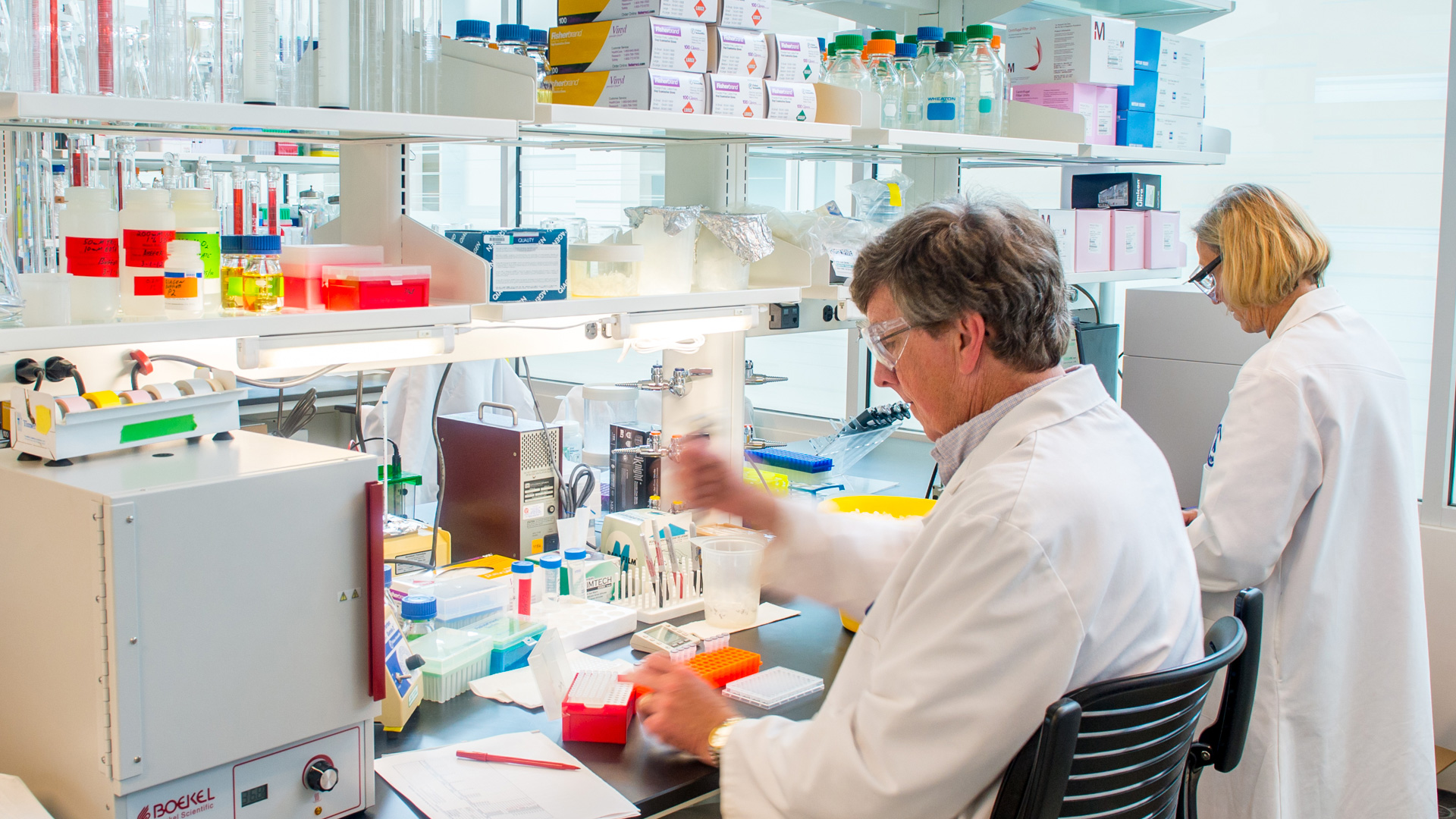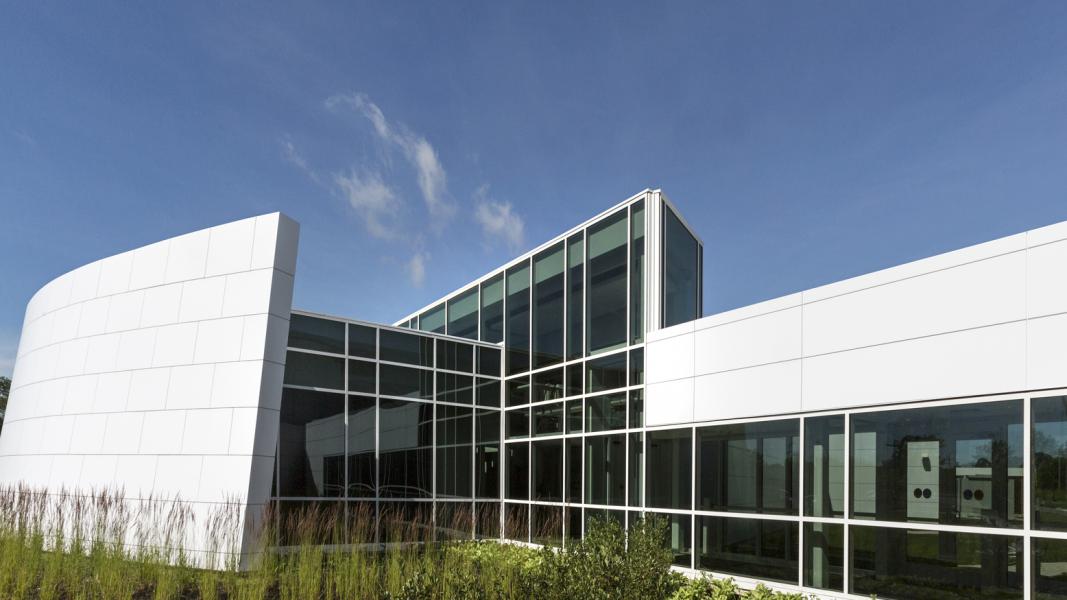
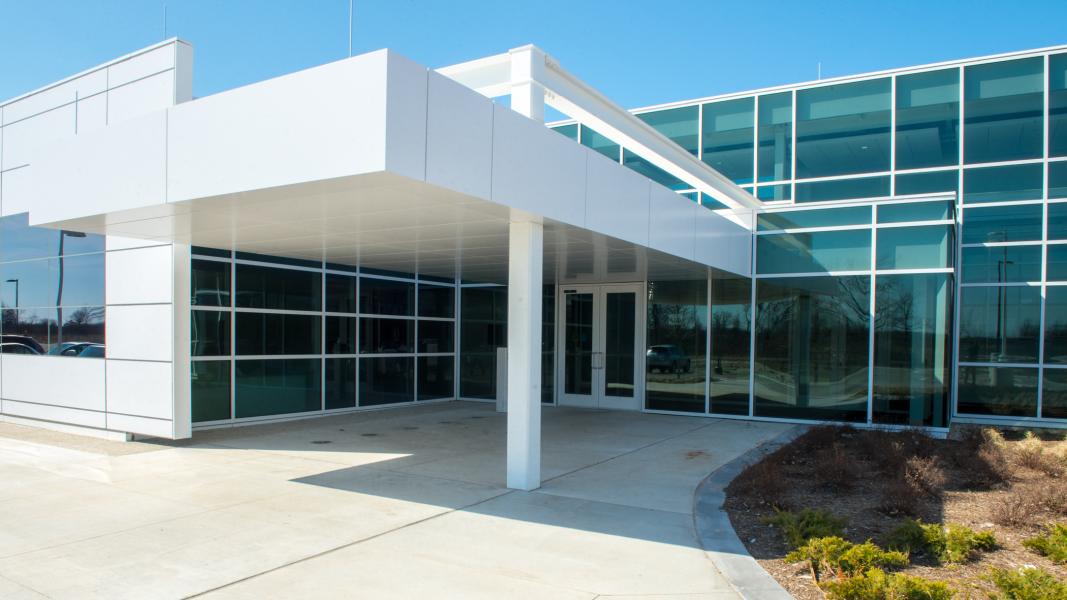
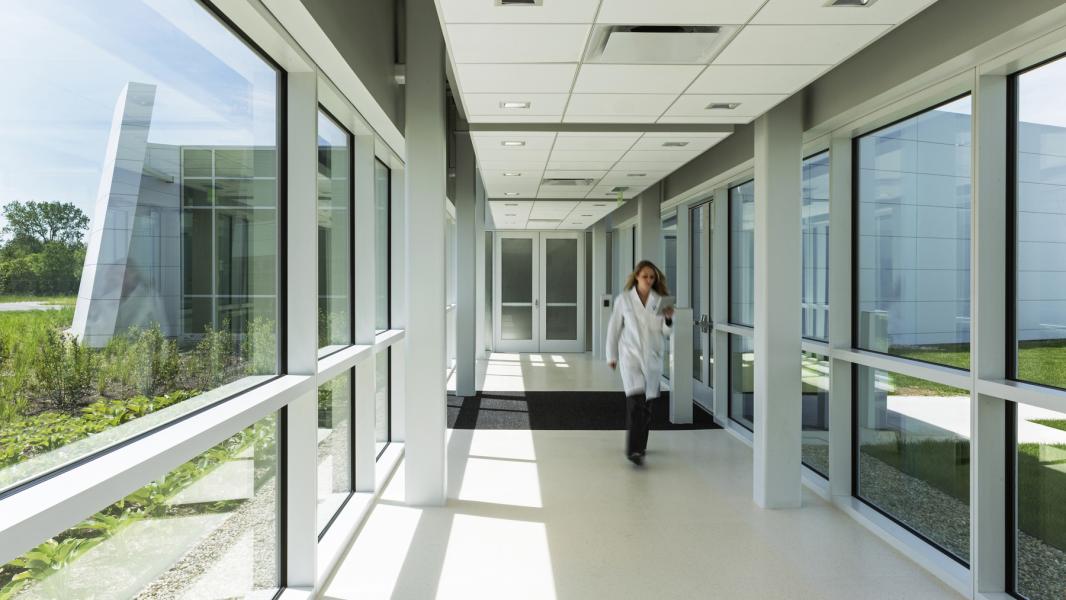
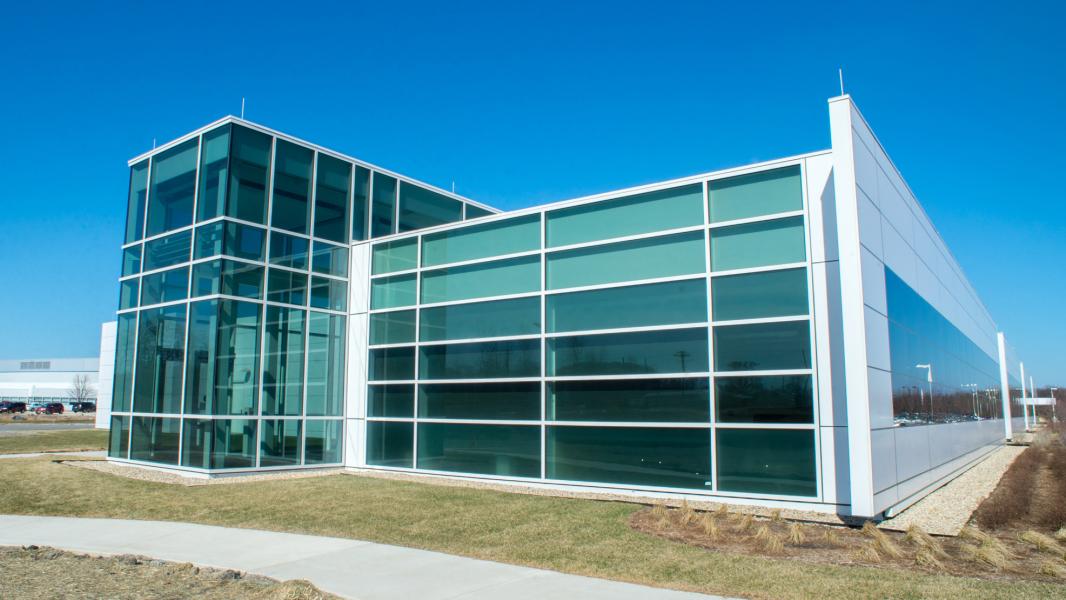
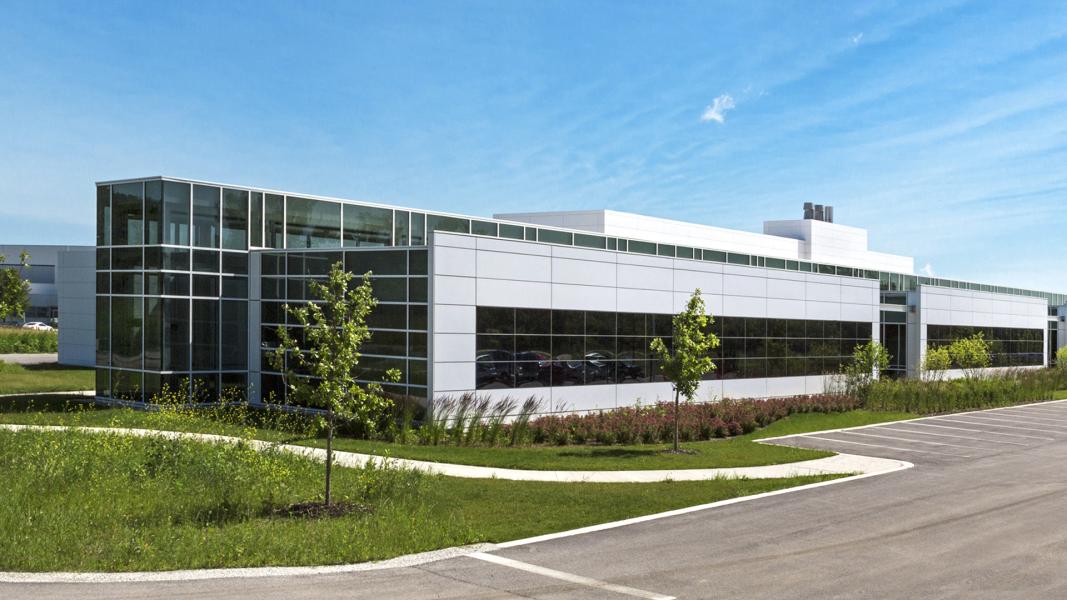
Sustainability was a major driver during the design of the APCF, located on the southwestern tip of the Argonne campus. A variety of early sustainable decisions were made that shaped the overall form of the building. The APCF uses a flexible modular approach which enhances the ability to implement technological improvements and reassign space without significant effort or cost, while maintaining an orderly approach to laboratory configurations as research needs evolve. In addition to the highly specialized crystallization suite, the research areas generally consist of open lab, lab support, and shared core lab facilities. The open lab modules provide large flexible research areas rather than small modules assigned to a single task.
The APCF site orientation maximizes daylighting potential and winter solar gain while minimizing summer solar heat gain. The ‘skin’ of the building was designed to achieve overall exterior thermal performance exceeding the u-values, solar heat gain coefficients and all other requirements set forth in the ASHRAE 90.1-2004 standard. The building features numerous other sustainability innovations.
The center spine that separates offices from laboratories brings an abundance of natural light into the center of the building. Where the building needs less light, there are no windows, cutting down on solar heat. The building is also mechanically efficient. Chilled beams, waste heat recovery, and ventilation using an Aircuity® system were used wherever possible.
Other sustainable features include the following:
- SageGlass®: Electronically tintable glass located along the south façade controls sunlight without shades or blinds. Occupants can manage glare and heat while maintaining a connection to the outdoors. The technology embedded in the glass results in abundant daylight, increased occupant comfort, and new levels of energy efficiency.
- Energy Recovery Wheel: Energy recovery wheels enable ventilators to provide fresh outdoor air at one-third the cost of conventional systems. Outdoor air raises indoor air quality by reducing indoor air pollution, which improves the health and productivity of building occupants. This technology not only reduces energy costs and heating/cooling loads, but also allows for scaling down building system equipment.
- Interior Environment: Sustainable features include laboratory casework high in recycled content, as well as nonporous phenolic resin countertops made from post-consumer waste. High-performance (low-flow) fume hoods may reduce overall energy use. The layout of the building allows 75% of regularly occupied spaces to be lit by natural daylight during normal business hours, and 90% of regularly occupied spaces have views of the outdoors.
- Outdoor environment: Native plantings were paired with rainwater management strategies to assist in the treatment and percolation of rainwater, especially when planted into bioswales or storm water detention basins. No long-term irrigation is planned. The site also has permeable paving to further encourage storm water infiltration.
